5 Fall Fruits You Can Grow in Containers
http://decor-ideas.org 11/12/2013 10:20 Decor Ideas
Few things suggest the bounty of early fall more than the sight of fruit ripening, even if it's growing on a little plant in a pot on your patio. Although producing enough of a harvest to make pies or juice is usually a big-time project, growing fruits or berries in a container can be pretty simple and highly satisfying.
It's a great way to add seasonal interest to your garden, give you samples to nibble on, and introduce your family to the ways of nature — you know, where blueberry babies come from, etc.
Following are five suggestions for fall fruits and berries well suited to container growing, and how to get started.
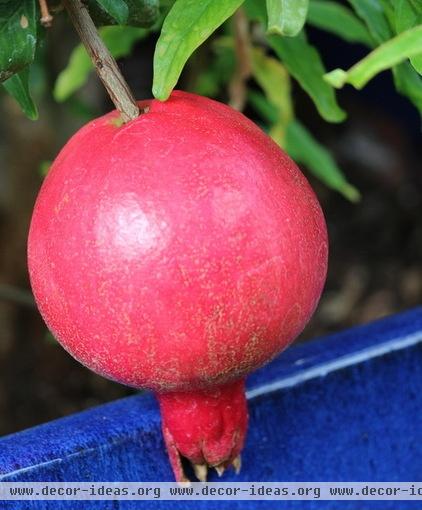
Start with a sizable plant if you want anything to harvest sooner: a 5-gallon nursery plant or larger. Transplant to a pot that is 2 inches deeper and wider than the nursery container, and fill it with good potting soil. Pay particular attention to watering and feeding during the growing season. You can prune to control size, but don't cut off flowers that lead to fruit production.
Note: Most of these plants are best suited to mild climates. If they're marginal where you live, you may be able to shelter them indoors during the coldest weather. And most of these won't grow in a container indefinitely; plan to transplant into the ground a few years down the line.
Pomegranate. Don't bother dreaming about going into the juice business, but growing a pomegranate in a pot gives you a chance to view up close the fascinating and beautiful development of the fruit. Starting in early summer, waxy orange-red flowers appear. Then the fruit gradually fattens and reddens by early fall, sometimes splitting open to reveal the glistening crimson edible seeds. All it takes is one fruit to make your effort worthwhile, and even if you strike out on a harvest, the plant may give you yellow fall foliage.
A dwarf variety such as 'Nana' is particularly well suited to life in a container. It grows 2 or 3 feet tall, with proportionately dwarfish fruit.
Botanical name: Punica granatum
Where it will grow: USDA zones 7–11 find your zone
Water requirement: Light to moderate
Light requirement: Full sun
Mature size: 10 feet tall and wide (when grown in the ground, smaller in a pot)
Growing tips: Feed several times during the growing season. Prune to control size in winter when the plant is leafless. During the growing season, cut back branch tips for bushiness — don't cut back too far or you lose flowers and fruits.
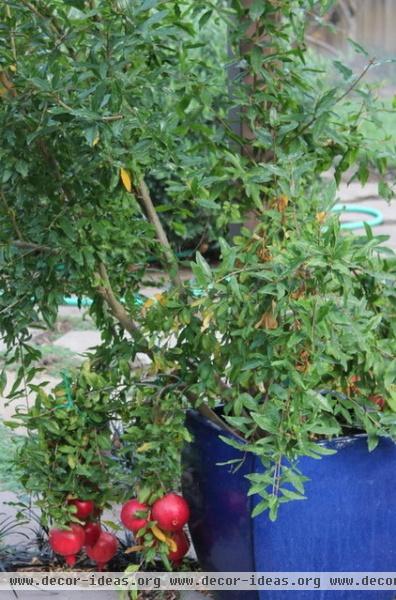
Despite how large and sprawling a mature pomegranate can become, a full-size variety can also do well in a pot. The one shown here is 'Angel Red,' with a dozen and a half ripe fruit after four years, in a deep blue ceramic pot that strikingly sets off the color of the fruit.
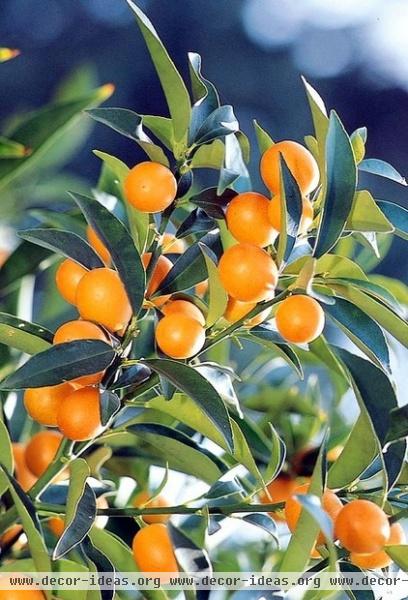
Kumquat and other citrus. Many types of dwarf citrus do well in pots and can produce a tasty crop if you live in citrus country. Kumquat may not give you much of a crop, but its bright orange fruits are very pretty and come dependably from fall through winter.
Shown here is 'Nagami' kumquat, with glossy thumb-size fruits. The bushy, shiny-leafed plant is small enough to live in a container for several years. Move your container plant into a protected spot (or indoors) if winter nights get too chilly.
Botanical name: Fortunella margarita 'Nagami'
Where it will grow: USDA zones 9–10
Water requirement: Moderate, more often in hot climates
Light requirement: Full sun or part shade especially in a container in hottest climates
Mature size: 8 feet tall, 6 feet wide (when grown in the ground)
Growing tips: Good soil mix is a must. Keep foliage shiny green with citrus food; yellow leaves usually indicate lack of iron.
For more on growing citrus in containers, check out Four Winds Growers, a pioneer in the development of dwarf varieties.
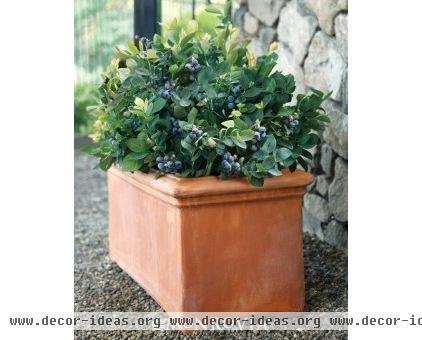
Blueberries. Long thought of as a Northern specialty, blueberries have steadily been advancing south and west — not because of changes in climate but clever work by plant breeders.
New varieties such as 'Bountiful Blue' and 'Peach Sorbet,' shown, can grow in drier warmer climates. They're compact enough to thrive in a container and provide berries over a long season, well into fall, and maybe even offer a touch of fall color.
Botanical name: Vaccinium corymbosum
Where it will grow: USDA zones 6–10
Water requirement: Moderate
Light requirement: Full sun or part shade especially in a container in hot climates
Mature size: 3–4 feet tall and wide (when grown in the ground, smaller in a container)
Growing tips: It's important to use planting mix rich in organic matter, such as the type sold for camellias and azaleas. Keep soil moist during the growing season; feed with acid food. Prune back lightly at the start of growth in spring, and pinch tips for bushy growth during the growing season.
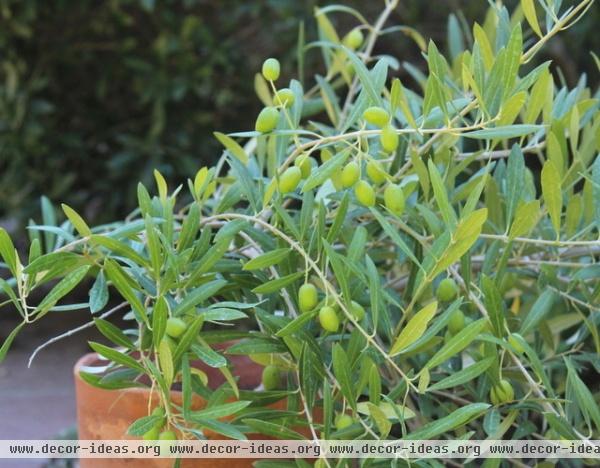
Olive. This is a another surprising choice for a container if you're accustomed to the gnarly, old olive trees in California and Mediterranean climates around the world. But an olive can live in pot for a while and even produce olives that start green, as shown here, and turn black. Remember that fresh olives are not good to eat and need processing. If you're willing to wait for fruit on your container plant, you can start with a small seedling — the one shown here began as a gallon-can plant. Even young olives have an interesting twisted shape and the distinctive gray-green foliage.
Containers particularly suit dwarf olives, such as 'Little Ollie'; it grows 6 to 8 feet tall but is considered non-fruiting.
And, yes, an abundance of olive fruits can make a mess, but only the super-fastidious will be bothered by what a container-grown plant drops.
Botanical name: Olea europaea
Where it will grow: USDA zones 8–11
Water requirement: Light
Light requirement: Full sun Mature size: Old trees can reach 20 to 30 feet tall.
Growing tips: Feed container-grown plants a couple of times during the growing season. Keep the little tree in a pot until it outgrows it; pruning keeps it smaller. Transplant into the ground or a larger container when roots fill up the pot.
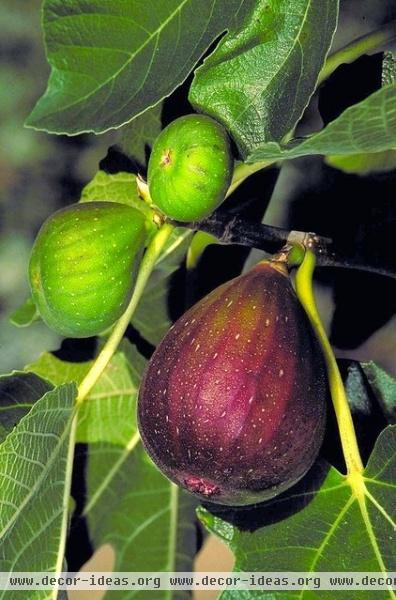
Fig. Many cold-climate gardeners, especially those with Mediterranean roots, prize figs enough to grow them outdoors in containers for the summer and keep them in a basement during winter. Even without an edible bonus, a fig makes a fine container plant. It is fast growing, and its big leaves have a striking tropical look. Typically fruit comes in two batches, late spring and early fall. 'Brown Turkey,' shown here, is smaller than most varieties.
Botanical name: Ficus carica, many varieties.
Where it will grow: USDA zones 7–9
Water requirement: Light
Light requirement: Full sun
Mature size: 15–30 feet or more tall and wide when grown in the ground. In a pot, pruning can keep height less than 8 feet.
Growing tips: Needs a big pot. Prune back in winter. For more on growing figs in containers, especially in cold climates, check Stark Bros. nursery for advice.
Related Articles Recommended












